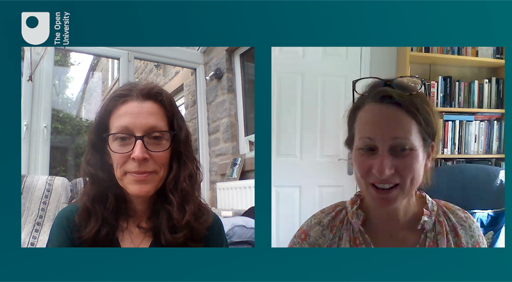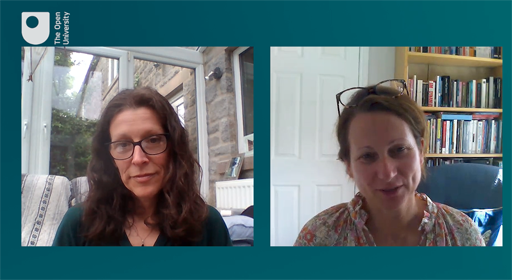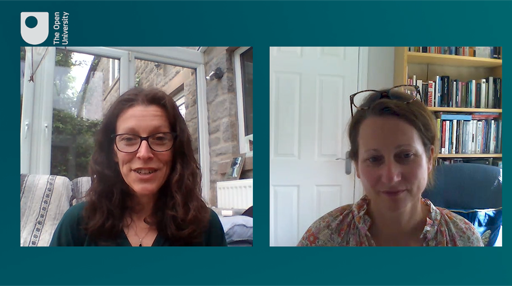3.3 Attached to nature?
Other researchers go further and argue that spending time in natural environments is a fundamental human need and that our health and well-being depends on it. You may have heard of the work of John Bowlby, a British psychoanalyst, who explored the significance of the mother child relationship from birth. His attachment theory suggests that very young children need to develop a strong and stable attachment to their main caregiver in order to go on to make further positive relationships as they grow and develop. When this doesn’t happen, and a baby’s needs are not met by their caregiver, the attachment is considered to be insecure and can have lifelong effects. It is the quality of attachment that is significant.
Just as babies are born with an innate ability and need to form human attachments, some researchers have proposed that they also have a need to connect with nature. This is sometimes referred to as biophilia and is most often associated with the biologist and naturalist E.O. Wilson who published a book in 1984 based on this idea. Others have expressed concern about both the quality and quantity of young children’s experiences of natural environments. For example, DEFRA (2011) found that:
Children are spending less and less time outdoors and the likelihood of children visiting any green space at all has halved in a generation.
Activity 3 Nature Tots
Concerns about the declining and unequal access to outdoor environments on young children’s health and wellbeing has led to a growing number of initiatives to support nature connection. One such initiative is Nature Tots offered by Derbyshire Wildlife Trust (England) for under-fives to engage with nature in their local area. Listen to Diane Gould, the Wilder Engagement Lead, introduce Nature Tots and respond to Nicola’s questions.
How are babies and toddlers involved in Nature Tots?

Transcript
NICOLA KEMP: Thinking about the youngest children, I was wondering, Diane, how do you involve them in your practice at the moment?
DIANE GOULD: We run sessions called Nature Tots for pre-school children, and they are open for nought to five-year-olds. So we have people who bring along three-week-old babies to this, and so they are involved. But we just do simple activities, like we might have-- in autumn, we might have a tub that's filled with dry autumn leaves, and the children lay in it, or there's things to look at, to feel, or to listen to. So we might have wind chimes in the woods as well.
So for the very young ones, it's simple sensory activities. And to be honest, it's more about them getting used to being outdoors and being happy outdoors and experiencing that. As they get slightly older for the toddlers, there's a whole array of things that we can do. We have mud kitchens, mud painting. We get little ones doing pond dipping, going on bug hunts.
Again, the sensory activities are really important for that age group. And they're just naturally curious. They love nature, so they're very easy to engage outside, learning about it all. And we can do physical activities as well. So we might put a hammock up in the woods. So they're just learning to cope with getting in and out of it and being in a different situation outside.
What do you think are the benefits of an initiative like Nature Tots?

Transcript
NICOLA KEMP: What do you think the benefits are for babies and toddlers of spending that time in natural environments from what you've observed in your practice?
DIANE GOULD: There's the sort of "straightforward" benefits, so does it-- most people say there's the health and wellbeing benefits. They're in fresh air. They're in sunshine. That's going to be good for them.
But on a more detailed level, there's evidence that being outside and exploring in nature can help their language development because it promotes conversation between the adults and the toddlers. It's also really good for their physical development.
They're learning to navigate different surfaces, even if it is just walking over a bit of woodchip instead of walking over a flat pavement, navigating over tree roots-- all these sorts of different natural surfaces are really good for them-- or they might be clambering over logs. And they're just learning to use their bodies in different ways.
On another level, as well, I think they can develop empathy for the natural world. So it's giving them that sort of benefit as well.
What support is there for those wanting to engage babies and toddlers outdoors?

Transcript
NICOLA KEMP: So what advice would you have for any adults who are wanting to develop their outdoor practice for this age group of babies and toddlers, which are often not really thought about as much in terms of early years practice?
DIANE GOULD: There's a lot of groups out there. If you look, there are outdoor groups already established. So if you can get along to one and observe and join in, with the children as well-- and I think seeing how much they enjoy being outside and getting ideas off of the leaders is really useful to boost your own confidence.
There's loads of great books and websites available to give you ideas on different activities that you can do outside. And when it comes to the practicalities of it, just kind of relax with it. Don't be worried about sticking to a plan. Usually, toddlers will go off on a tangent, and that's absolutely fine.
I mean, I was running a session the other day. And we were meant to be doing about worms, and we were worm charming. Then a frog hopped in the middle of the group. And so we completely forgot about the worms. And we looked at the frog. And then we went off to look at the tadpoles in the pond.
And that's fine. I had a plan. We didn't stick to it. But it's going with what they're engaged in. And they will go off on a tangent. But just make the most of those moments that they're really enjoying.
The Trust has developed a Wild Tots at home website. This offers ideas for nature engagement that can be done in the home or setting. Find out more by having a look: Wild Tots at home | Derbyshire Wildlife Trust [Tip: hold Ctrl and click a link to open it in a new tab. (Hide tip)]
